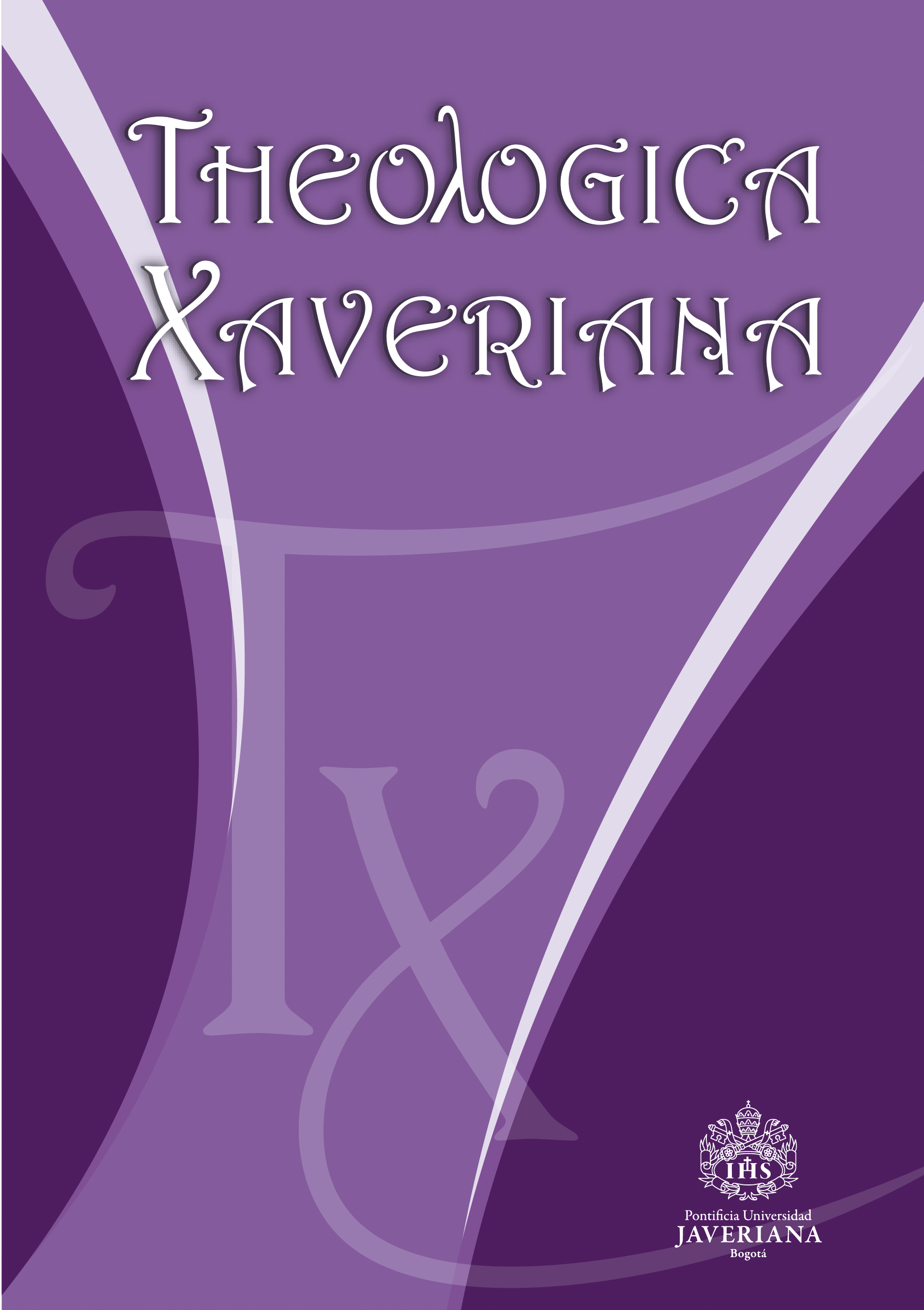Abstract
In the micronarrative of Ex 4:24- 26, Sephora, Moses’ wife, becomes a model for the protagonism of those characters who are generally evaluated as secondary, emphasizing their fundamental importance for the history of salvation. In the case,
Séfora surprises in several senses: literally, she gains centrality in the scene in question; historically, in defending the survival of those who are threatened and assuming protagonism as a woman, she might contradict eventual prejudices belonging to her cultural context; theologically, she is portrayed as one who obtains the consent of God.
Albertz, Rainer. Exodus 1–18. Zurique: Theologischer Verlag, 2012.
Andiñach, Pablo R. O Livro do Êxodo. Um comentário exegético-teológico. São Leopoldo: Sinodal, EST, 2010.
Bar-Efrat, Shimon. Wie die Bibel erzählt. Alttestamentliche Texte als Kunstwerk verstehen. Gütersloh: Gütersloher Verlagshaus, 2006.
Blum, Ruth, e Erhard Blum. “Zippora und ihr חתן דמים ”. Em Textgestalt und Komposition. Exegetische Beiträge zu Tora und Vordere Propheten, organizado por W. Oswald, 123-136. Tübingen: Mohr Siebeck, 2010.
De Figueiredo, Telmo José Amaral. “Um nome que faz toda a diferença. Análise literária de Gênesis 32,23-33”. Tese de Doutorado apresentada à Faculdade de Filosofia, Letras e Ciências Humanas da Universidade de São Paulo. São Paulo, 2016.
Dohmen, Christoph. Exodus 1–18. Freiburg: Herder, 2015.
Elliger, Karl, e Rudolph, Wilhelm (rds.). Biblia Hebraica Stuttgartensia. Stuttgart: Deutsche Bibelgesellschaft, 1997.
Fernandes, Leonardo Agostini. “Onde estiver a Torá, estará meu servo Moisés”. Em Pentateuco. Da formação à recepção, organizado por M. da Silva Carneiro; M. Ottermann; e T. J. Amaral de Figueiredo, 169-190. São Paulo: Paulinas, 2016.
_____. “Séfora: a mulher proativa que livra o homem da morte (Ex 4,24-26)”. Revista de cultura teológica 86 (2015): 59-84.
Fischer, Georg. “Das Mosebild der Hebräischen Bibel”. Em Mose. Ägypten und das Alte Testament, organizado por E. Otto, 84-120. Stuttgart: Katholisches Bibelwerk, 2000.
_____ e Dominik Markl. Das Buch Exodus. Stuttgart: Katholisches Bibelwerk, 2009.
Fischer, Irmtraud. Gottesstreiterinnen. Biblische Erzählungen über die Anfänge Israels. Stuttgart: Kohlhammer, 2006.
Francisco, Edson de Faria. Manual da Bíblia hebraica. Introdução ao Texto Massorético. Guia introdutório para a Bíblia Hebraica Stuttgartensia. São Paulo: Vida Nova, 2008.
Gillmayr-Bucher, Susanne. “Die literarische Konzeption der Figur Gott im Buch Exodus”. Em Gott als Figur. Narratologische Analysen biblischer Texte und ihrer Adaptationen, organizado por U. E. Eisen e I. Müllner, 57-87. Freiburg: Herder, 2016.
Grenzer, Matthias. “A proposta ímpar do amor ao imigrante (Lv 19,33-34).” Em Religião, migração e mobilidade humana, organizado por A. da Silva Moreira, 13-30. Goiânia: Editora da PUC-Goiás, 2017.
_____. “As dimensões temporais do verbo hebraico: desafio ao traduzir o Antigo Testamento”. Pistis & praxis 8 (2016): 15-32.
_____. “Briga entre profetas (Nm 12)”. Revista de cultura teológica 38 (2002): 77-94.
_____. “Imigrante em Madiã (Ex 2,15c-22). Traços característicos do personagem Moisés”. Atualidade teológica 49 (2015): 75-89.
_____ e Francisca C. C. Suzuki. “Voltar, com a família, à sociedade em conflito (Ex 4,18-20)”. Didaskalia 46 (2016): 159-178.
Hieke, Thomas. Levitikus 1–15. Freiburg: Herder, 2014.
Kessler, Rainer. “Psychoanalytische Lektüre biblischer Texte – das Beispiel von Ex 4, 24-26”. Em Gotteserdung. Beiträge zur Hermeneutik und Exegese der Hebräischen Bibel, por R. Kessler, 63-80. Stuttgart: Kohlhammer, 2006.
Marguerat, Daniel, e Yvan Bourquin. Para ler as narrativas bíblicas. Iniciação à análise narrativa. São Paulo: Loyola, 2009.
Mendonça, José Tolentino. A leitura infinita. A Bíblia e sua interpretação. Prior Velho: Paulinas, 2015.
Propp, William H. “That Bloody Bridegroom (Exodus IV 24-6)”. Vetus Testamentum 43 (1993): 495-518.
Römer, Thomas. “Os papéis de Moisés no Pentateuco”. Em Pentateuco. Da formação à recepção, organizado por M. da Silva Carneiro; M. Ottermann; e T. J. Amaral de Figueiredo, 89-107. São Paulo: Paulinas, 2016.
Schmitt, Rüdiger. “Apotropäische Riten”. Em Das Wissenschaftliche Bibellexikon im Internet (2008), www.wibilex.de (ccessado em 4 de dezembro de 2017).
Ska, Jean Louis. “Our Fathers Have Told Us”. Introduction to the Analysis of Hebrew Narratives. Roma: Pontificio Istituto Biblico, 2000.
Utzschneider, Helmut, e Wolfgang Oswald. Exodus 1–15. Stuttgart: Kohlhammer, 2013.
Vogels, Walter. Moisés e suas múltiplas facetas. Do Êxodo ao Deuteronômio. São Paulo: Paulinas, 2003.
Zimmermann, Ulrich. “Beschneidung (AT)”. Em Das Wissenschaftliche Bibellexikon im Internet (2012), https://www.bibelwissenschaft.de/wibilex/das-bibellexikon/lexikon/sachwort/anzeigen/details/beschneidung-at/ch/0794737961e5f28949
d532f210bd (acessado em 4 de dezembro de 2017).
Zwickel, Wolfgang. Leben und Arbeit in biblischer Zeit. Eine Kulturgeschichte. Stuttgart: Calwer, Deutsche Bibelgesellschaft, 2013.
This journal is registered under a Creative Commons Attribution 4.0 International Public License. Thus, this work may be reproduced, distributed, and publicly shared in digital format, as long as the names of the authors and Pontificia Universidad Javeriana are acknowledged. Others are allowed to quote, adapt, transform, auto-archive, republish, and create based on this material, for any purpose (even commercial ones), provided the authorship is duly acknowledged, a link to the original work is provided, and it is specified if changes have been made. Pontificia Universidad Javeriana does not hold the rights of published works and the authors are solely responsible for the contents of their works; they keep the moral, intellectual, privacy, and publicity rights.
Approving the intervention of the work (review, copy-editing, translation, layout) and the following outreach, are granted through an use license and not through an assignment of rights. This means the journal and Pontificia Universidad Javeriana cannot be held responsible for any ethical malpractice by the authors. As a consequence of the protection granted by the use license, the journal is not required to publish recantations or modify information already published, unless the errata stems from the editorial management process. Publishing contents in this journal does not generate royalties for contributors.



